#William Harvey
Text
Shakespeare Weekend
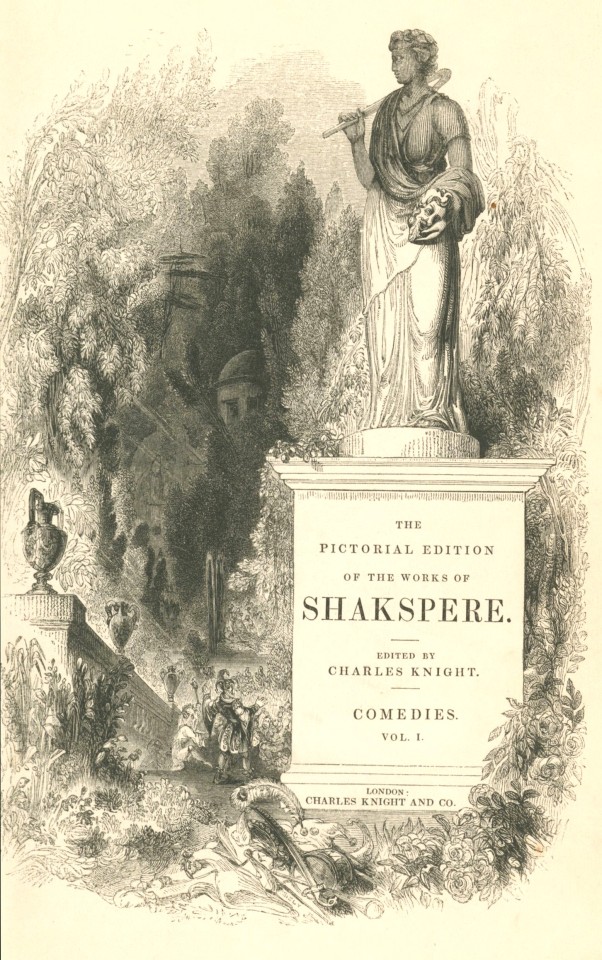


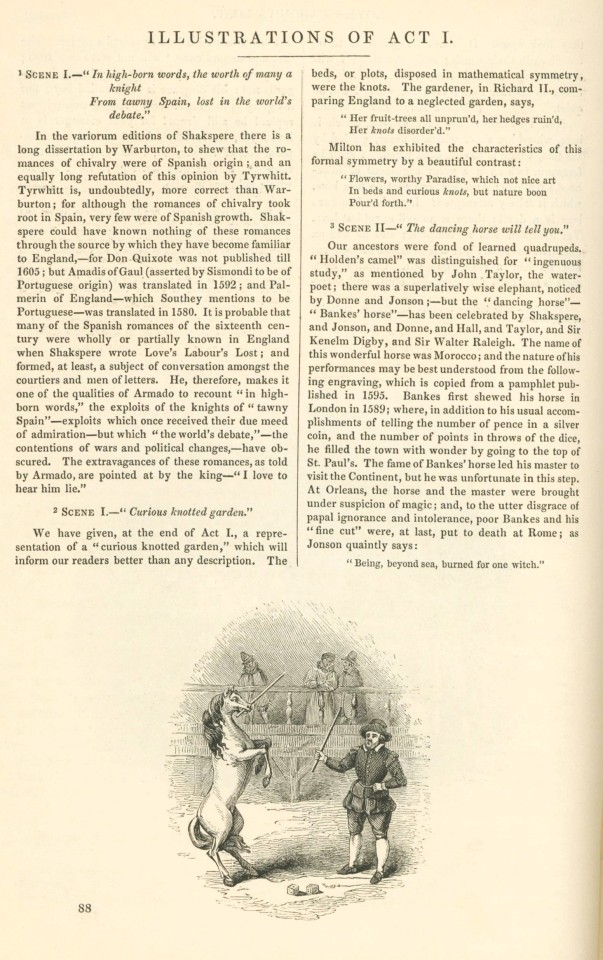
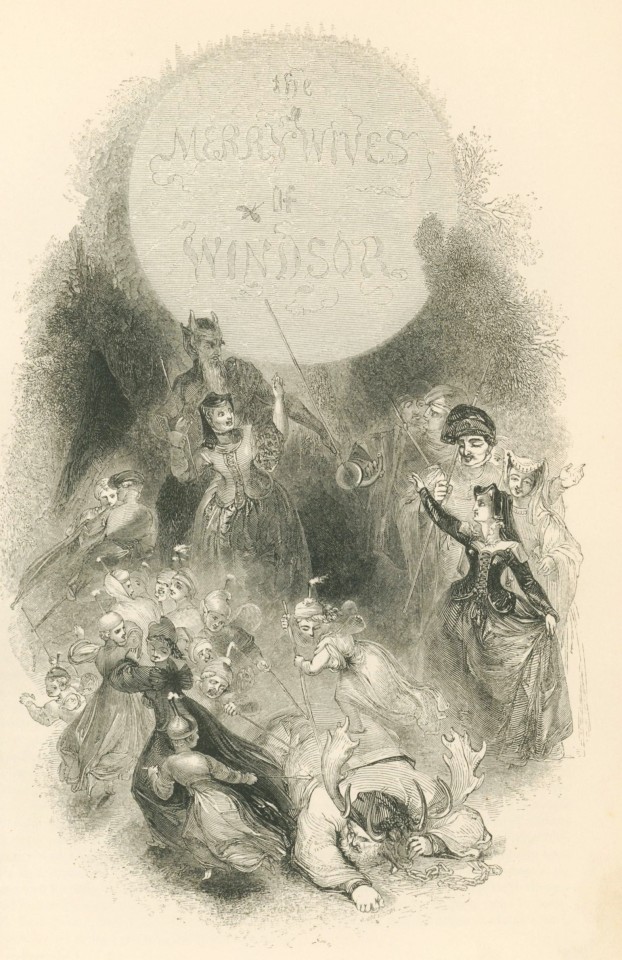


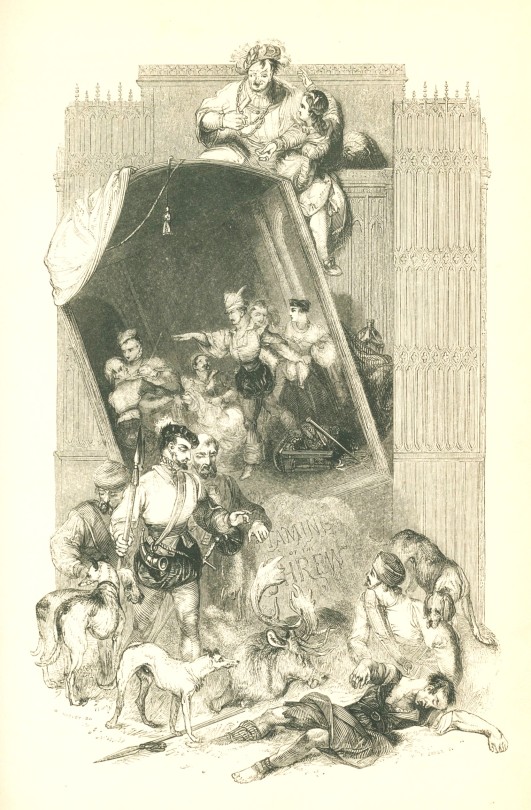
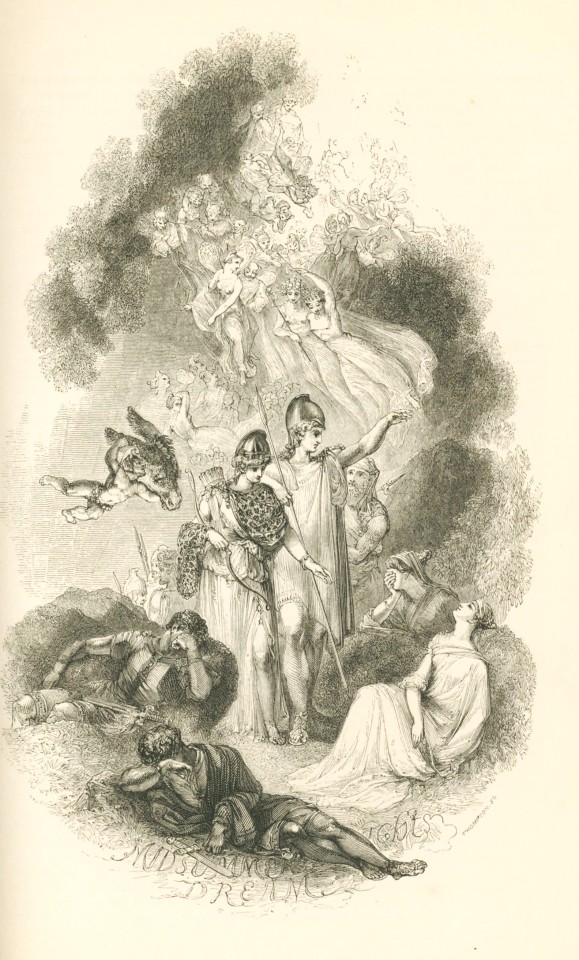

The Pictorial Edition of the Works of Shakspere edited and published by Charles Knight (1797-1873) out of London in 1839 was originally issued in fifty-six monthly parts before being bound in an eight-volume set. Like earlier Shakespeare editors, Knight felt all previous editions of Shakespeare collections had been compiled by men who “had corrupted his text, and had never rightly appreciated his consummate art.” As an experienced publisher of encyclopedias and miscellanies, he set out to “humbly” correct their errors with an ambitiously illustrated collection.
The wood engravings place Shakespeare’s characters and events within a historical context opposed to a theatrical one and are elucidated in subsidiary segments interspersed throughout the plays’ acts. Volume One of Knight’s collection includes Two Gentlemen of Verona, Love’s Labour’s Lost, The Merry Wives of Windsor, The Comedy of Errors, Taming of the Shrew, and A Midsummer Night’s Dream. Most illustrations within the collection are unsigned, but British wood engravers John Jackson (1801-1848) and William Harvey (1796-1866) along with British painter G.F. Sargent are featured prominently among the titlepage and larger illustrations.
View more Shakespeare Weekend posts.
-Jenna, Special Collections Graduate Intern
#Shakespeare weekend#william shakespeare#the pictorial edition of the works of shakspere#charles knight#wood engravings#john jackson#william harvey#g.f. sargent
27 notes
·
View notes
Photo


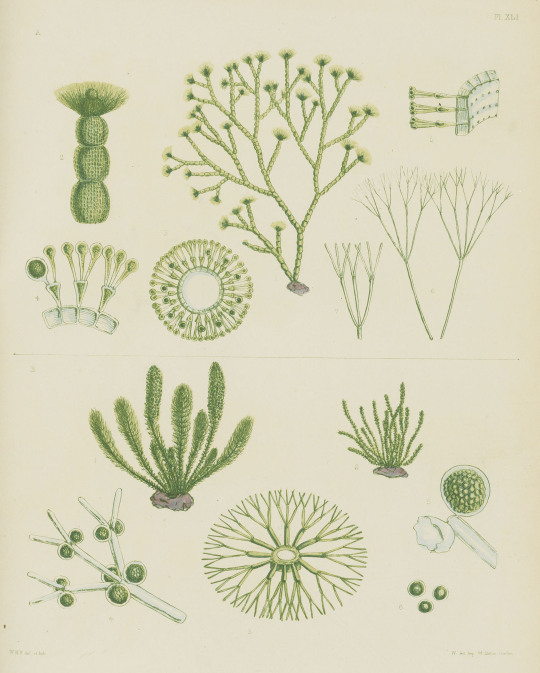
Nereis boreali-americana (Marine algae of North America), 1852
William Harvey (1811-1866)
#art#science#william harvey#algae#marine algae#marine#nereis boreali-americana#drawing#drawings#scientific drawings#north america#green#pink#biology#botanist#botanique#plants#illustration#illustrations#lithograph#litography#botany#botanical art
565 notes
·
View notes
Text






William Harvey – Scientist of the Day
William Harvey, an English physician, died on June 3, 1657, at the age of 79.
read more...
#William Harvey#circulation#physiology#histsci#histSTM#17th century#history of science#Ashworth#Scientist of the Day
13 notes
·
View notes
Text

[ID: a photograph of a man in front of a pottery wheel edited to be william harvey holding a scalpel, and the thing on the pottery wheel is edited to be a toad. text over the picture reads, "toads owned by suspected withces better not drink milk / lest they end up on my operating table!!! /end ID]
i had a vision
6 notes
·
View notes
Text
Avicenna’s Canon brilliantly synthesises Islamic medicine with that of Hippocrates (460 – 370 BC) and Galen (129 – 200 AD). There are also elements of ancient Persian, Mesopotamian and Indian medicine. This was supplemented by Avicenna’s extensive medical experiences.
In the Canon, Avicenna introduced diagnoses and treatments for illnesses unknown to the Greeks, being the first doctor to describe meningitis. He made new arguments for the use of anaesthetics, analgesics, and anti-inflammatory substances.
Looking forward to modern notions of disease prevention, Avicenna proposed adjustments in diet and physical exercise could heal or prevent illnesses.
Avicenna was also vital to the development of cardiology, pulsology, and our understanding of cardiovascular diseases.
Avicenna’s detailed descriptions of capillary flow and arterial and ventricular contractions in the cardiovascular system (the blood and circulatory system) assisted the Arab-Syrian polymath Ibn al Nafis (1213-1288), who became the first physician to describe the blood’s pulmonary circulation, the movement of blood from the heart to the lungs and back again to the heart.
This happened in 1242, centuries before scientist William Harvey arrived at the same conclusion in 17th century England.
— Avicenna: the Persian polymath who shaped modern science, medicine and philosophy
#darius sepehri#history#medicine#medical history#academia#cardiology#islamic golden age#persia#iran#ibn sina#avicenna#ibn al-nafis#william harvey#the canon of medicine#meningitis#cardiovascular disease#blood#circulation#heart
6 notes
·
View notes
Text
4 books on women's health
Today I offer 4 books which deal with female psychology, before it existed.
Willis by way of dissection anticipates modern ideas of the physiology of emotion baby connecting the mood, hysteria and melancholy with Brain functions.
Châstelain, who treated diseases of the nervous system Argues that that vapors and convulsions and hysteria are functions of body chemistry and
pseudo Albertus Magnus…
#convulsions#diseases of the nervous system#l&039;Université de Montpellier1697#Thomas Willis#William Harvey#Womens médecin
0 notes
Text
good morning Hannah nation, time to finish Book 4. context is in the first post, check the through the first tag
Book 4 - Europe in the 17th and 18th centuries - society, power and colonial dynamics.
Part 3 - Construction of European modernity
Due to the work of a multitude of different scientists, all under the belief that knowledge contributes to the betterment of Humanity, the Scientific Revolution took place.
Francis Bacon created the experimental method, still in use today; René Descartes created the bases of rationalist thinking; William Harvey discovered how the circulatory system works; Galileu Galilei confirmed that the Earth orbited around the Sun; Johannes Kepler proved planets orbit in an elliptic orbit; and Isaac Newton created the Universal Law of Gravity.
All of these new discoveries completely changed old beliefs about Man and Nature, and many academies, with modern laboratories, frequently published their new discoveries.
Alongside the Scientific Revolution came the age of Enlightenment, that believed in equality(all people are born with certain rights given by Nature), popular sovereignty(any power depends on the will of the people) and separation of powers(the three government powers, executive, legislative and judicial must be seperate and equal).
These ideas were spread all over, through aristocratic salloons or in academies, but the most impactful mean was the Encyclopedia, also known as the Rational Dictionary of Science, of Art and of Crafts. They permited an easy acess to the quick advancements in science and Enlightened ideals.
the last part of this book was pretty short, see you in the next one!
#hannah's history lessons#scientific revolution#enlightenment#encyclopedia#francis bacon#rené descartes#william harvey#galileu galilei#johannes kepler#isaac newton#history
0 notes
Text

#William Harvey#anatomy#medicine#cardiology#black and white#history#historical#quote#circulatory system
0 notes
Text
Lady Mary's Restoration tunes and her ghostly legacies
SUNDAY SUPPLEMENT: The registers at Croydon Minster contain 17th Century records of the Harvey family which worked for Archbishop Laud and, as DAVID MORGAN explains, had a musician daughter who made a notable piece of history
Dering-do: Lady Mary was part of the landed gentry during the Restoration era
It is another claim of Croydon’s musical heritage that Lady Mary Dering was the first woman in…

View On WordPress
#Archbishop Laud#Archbishop of Canterbury#Croydon Minster#David Morgan#Dering Place#Lady Mary Dering#William Harvey
0 notes
Text
Shakespeare Weekend










The Dramatic Works of William Shakespeare with notes, original and selected, by Samuel Weller Singer, F.S.A., and a life of the poet, by Charles Symmons, D.D. was published in 1826 by the influential English printers Chiswick Press in ten volumes. The works are accompanied by sixty engravings on wood by Englishman John Thompson “from drawings by Stothard, Corbould, Harvey, etc.” Thomas Stothard (1755-1834) was a British illustrator and student of the Royal Academy who had a penchant for illustrating the works of his favorite poets. Over his career Stothard designed plates for pocket books, concert tickets, almanacs, and actor portraits, and had previously worked with Shakespeare editor Alexander Pope (1688-1744).
Henry Corbould (1787-1844) was born into a painting lineage and also attended the Royal Academy. A devoted artist, he was well known for his book illustrations and was considered surpassed by few in his professional knowledge. Englishman William Harvey (1796-1866) was a preeminent illustrator, engraver, and designer who contributed works to many popular publications of his time.
Stothard, Corbould, and Harvey provided the inspirational base of Thompson’s engravings and helped bring to life Shakespeare’s words. The engraved title vignettes provide a subtle context of characters and scenery to lead readers into Shakespeare’s world and contribute to the illustrative traditions of Shakespeare publications.
Volumes Two and Three shown here contain Measure for Measure, Much Ado About Nothing, Midsummer-Night's Dream, Love’s Labour’s Lost, Merchant of Venice, As You Like It, All’s Well that Ends Well, and Taming of the Shrew.
View more Shakespeare Weekend posts.
-Jenna, Special Collections Graduate Intern
#shakespeare weekend#william shakespeare#shakespeare#the dramatic works of william shakespeare#samuel weller singer#charles symmons#chiswick press#john thompson#thomas stothard#alexander pope#henry corbould#william harvey#engravings
47 notes
·
View notes
Text
Kan Dolaşımının Keşfi: William Harvey Kimdir?
Kan Dolaşımının Keşfi: William Harvey Kimdir?
William Harvey, (1 Nisan 1578-3 Temmuz 1657) insan vücudundaki sistemik kan dolaşımını tam olarak ve ayrıntılarıyla keşfeden ve öne sürdüğü bu fikri desteklemek için yeni argümanlar ve deneyler ortaya koyan, çalışmalarıyla anatomi ve fizyoloji bilimlerine çok önemli katkılarda bulunmuş İngiliz tıp doktorudur.
Kan Dolaşımının Keşfi: William Harvey…
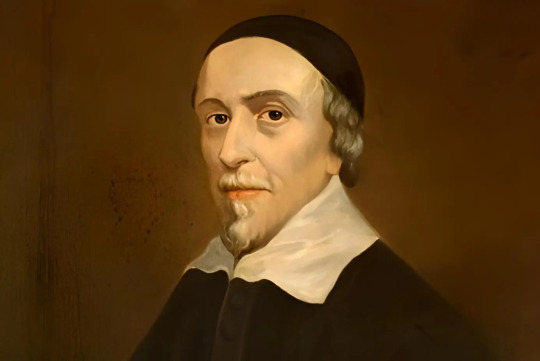
View On WordPress
#Anaksimandros Kimdir?#kan dolaşımı#Kan Dolaşımının Keşfi#Kan Dolaşımının Keşfi: William Harvey Kimdir?#Keşfi#William Harvey#William Harvey Kimdir?
0 notes
Text
"All we know is still infinitely less than all that still remains unknown."---William Harvey, English physician & physiologist, 1578-1657
View On WordPress
0 notes
Text
Responding to Our Bodies' Messages
Responding to Our Bodies’ Messages
Many people think we can eat whatever we want during their childhood. Although many children get sick and. Mountains of sweets, beans on toast, burgers and fries, milkshakes, sweet drinks and potatos in every form will be consumed and very likely the glucose will be burned off. However, our lifestyles are getting more sedantry, with gaming, computers and social media replacing the need to get out…

View On WordPress
#Claude Bernard#convalescence#health#inflammation#Looking after ourselves#micronutrients#muscle cells#recovery#sea swimming#seaside#self-care#sewage#staying healthy#stretching#vitamins and minerals#weight training#William Banting#William Harvey
0 notes
Text
Serenity which accumulates more often in the ovaries or the glands of the mesentery than the folds of the brain....
from) Traité des convulsions et des mouvemens convulsifs qu’on appelle à présent vapeurs, par M. Chastelain.”
“ As women experience more serenity than men the most frequent cause of their convulsions and convulsive moments is serenity which accumulates more often in the ovaries or the glands of the mesentery than the folds of the brain or the ventricles. “
759J M. Jean Châstelain ±1715…
#convulsions#diseases of the nervous system#l&039;Université de Montpellier1697#Thomas Willis#William Harvey#Womens médecin
0 notes
